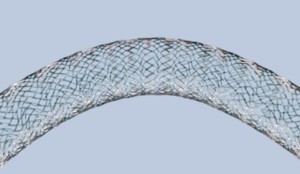Stenting venous obstruction is now standard practice in many hospitals. The commonest indication is to open-up residual lesions after thrombolysis/thombectomy for ilio-femoral DVT. However, there is an increasing trend to stent non-thrombotic iliac venous lesions (NIVL’s). These are considered to be May-Thurner syndrome in a broader sense and may be primary in nature or secondary as seen in patients with the post-thrombotic syndrome (PTS). Since veins are collapsible tubes imaging techniques which display a narrowing are often unreliable. A need for an accurate hemodynamic test is required to complement radiological images to assess the haemodynamic significance of any narrowing. A current challenge is to select those patients who are likely to benefit from stenting. Measurement of venous pressures across a potential stenosis at rest and after provocation manoeuvres has been proposed.
JOHN HOVORKA About 85% of our patients who are stented have chronic post-thrombotic venous obstruction (>3months) based on objective and surrogate criteria. We follow the guidelines of the American Venous Forum who recommend endovenous stenting to improve venous symptoms and quality of life. These are assessed using standard questionnaires like the SF-36, CIVIQ, VCSS, VDS and Villalta scales. Although intra-venous ultrasound (IVUS) is considered the gold standard investigation in the diagnosis of an iliac vein stenosis it will miss about 10% of clinically significant lesions that may be relieved by a stent.
Selection for stenting is based primarily on clinical features supported by the presence of an iliac lesion on IVUS. Abnormal air-plethysmography/venous pressure tests often help to support the decision to stent. Important symptoms include orthostatic venous pain which means pain on dependency with relief on elevation, and venous claudication. Signs included Grade 3 oedema described by Raju 1, 2 and 3 meaning slight, pitting and obvious, respectively. Duplex ultrasound and APG parameters including VFI help to define the occlusive and refluxive component of the patients’ symptoms. Venous occlusion APG with reactive hyperaemia and significant venous pressure elevations after exercise are of some help as dynamic tests in grading the obstruction component and prioritizing patients for treatment.
